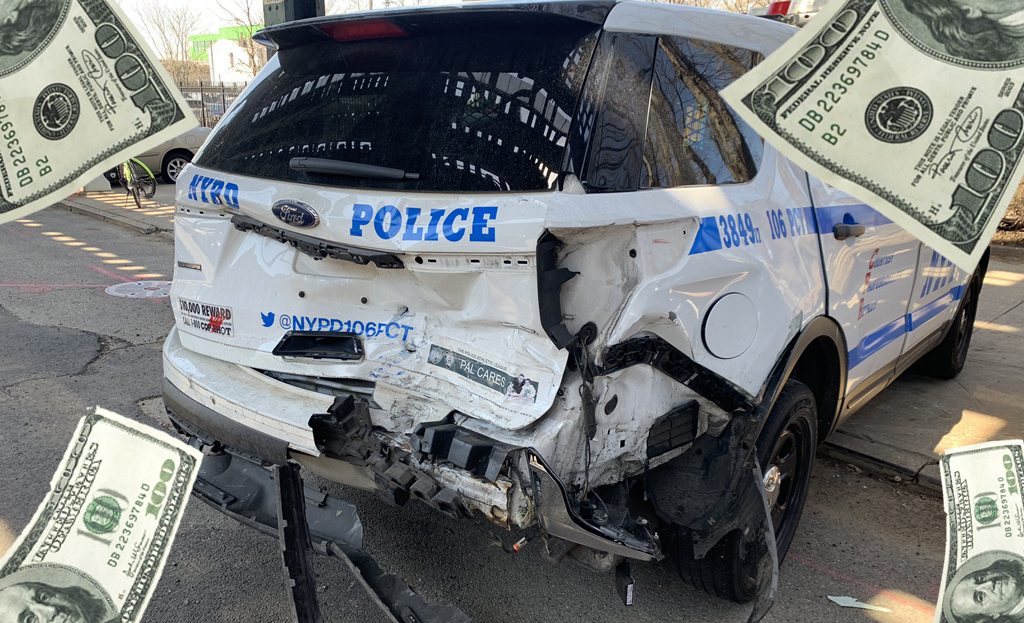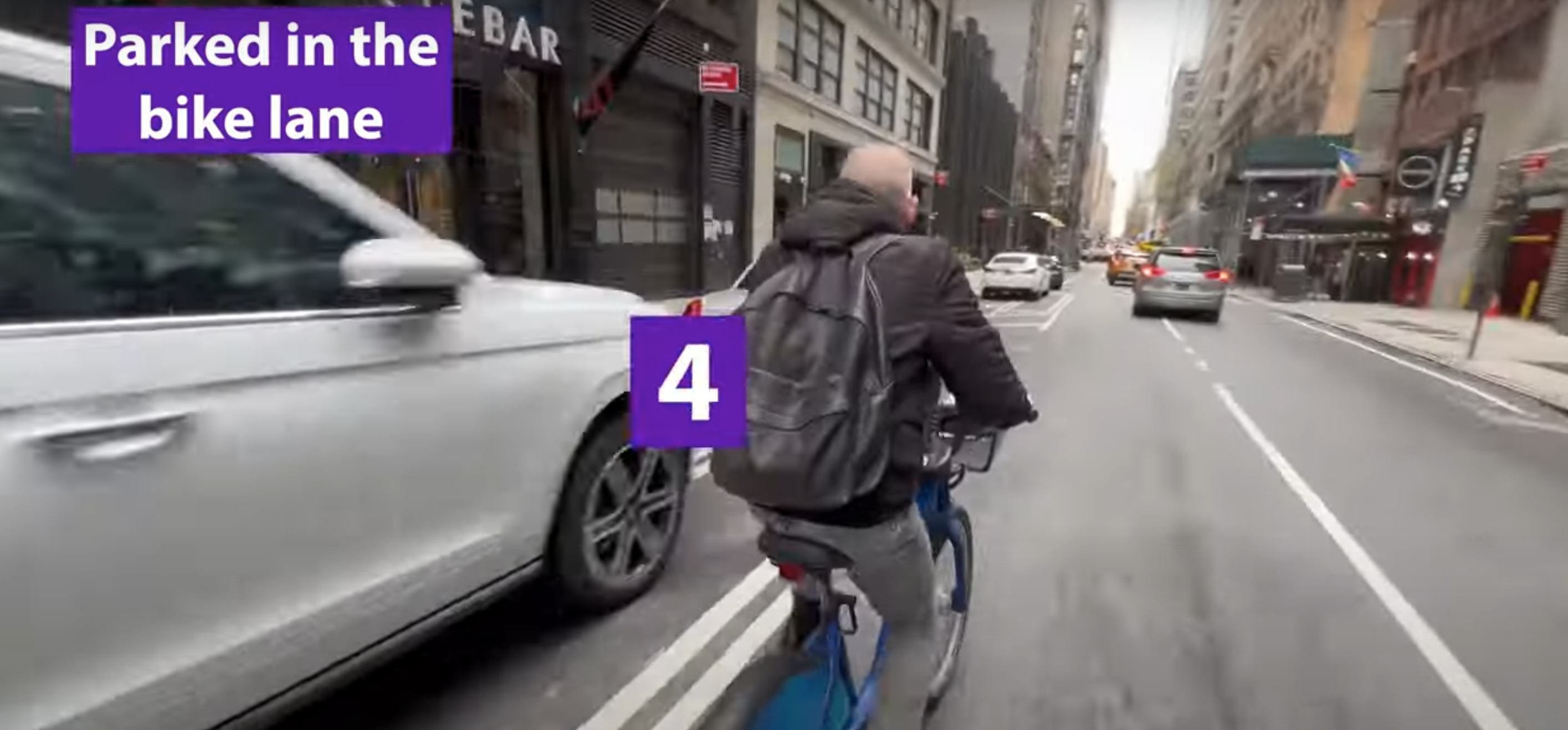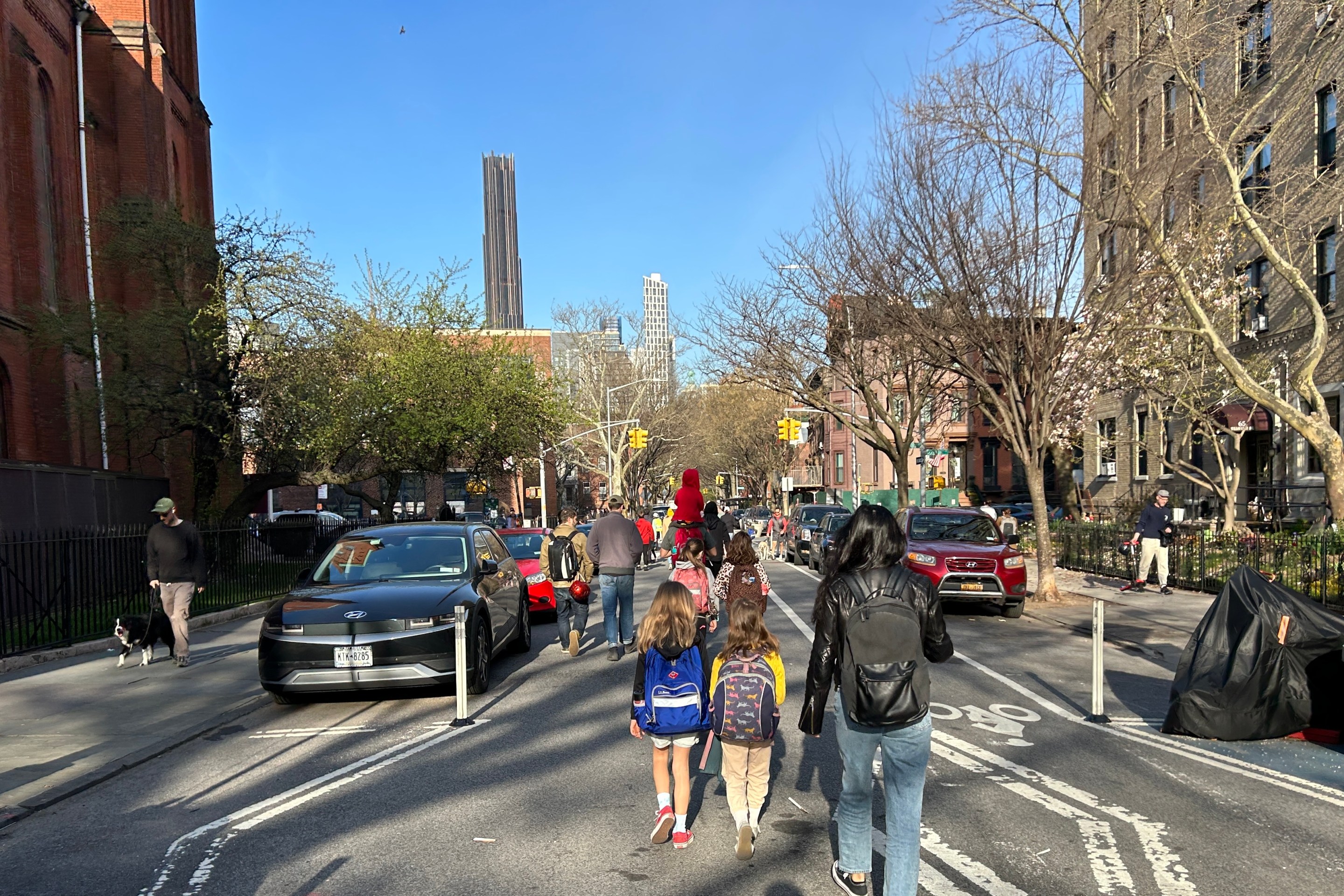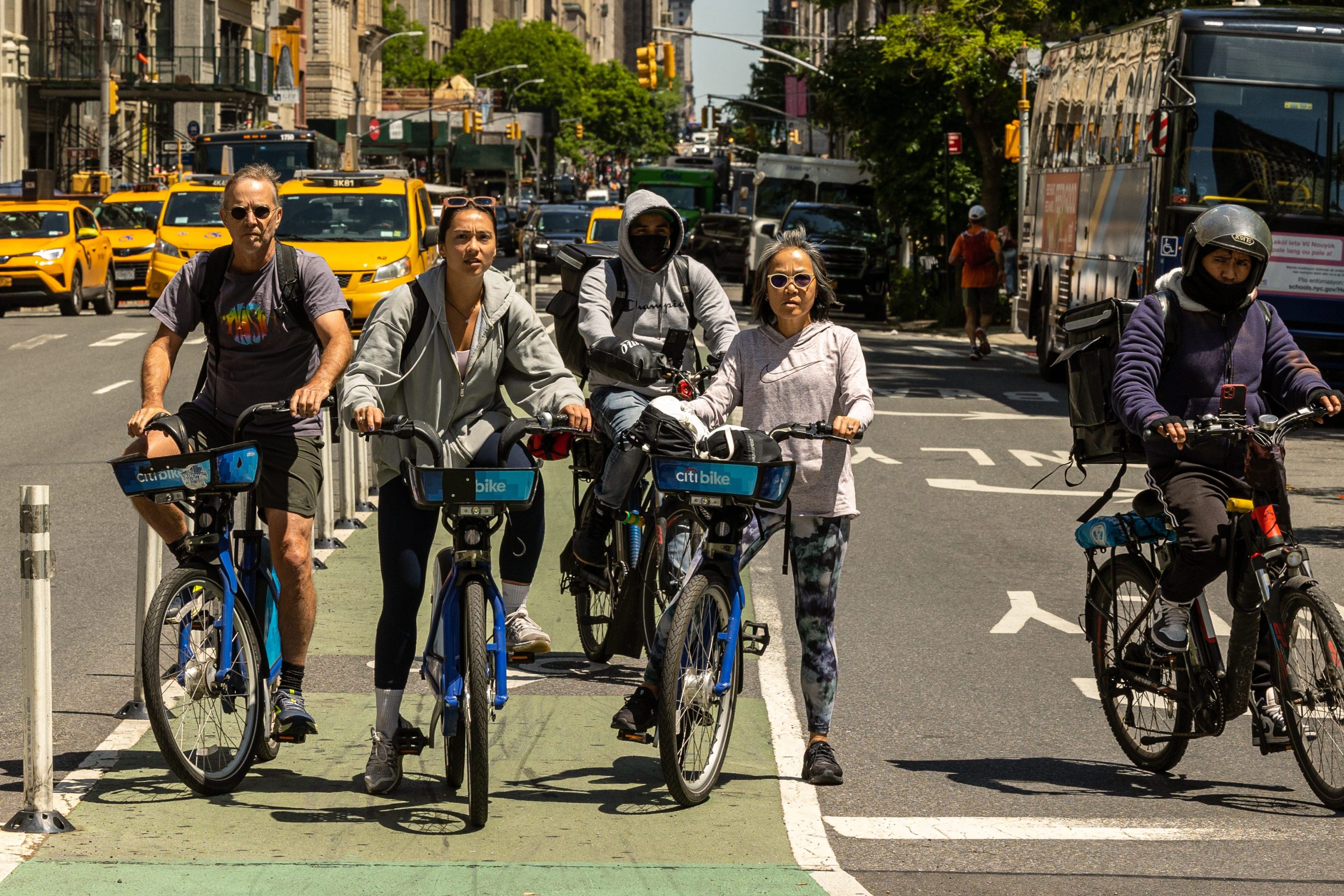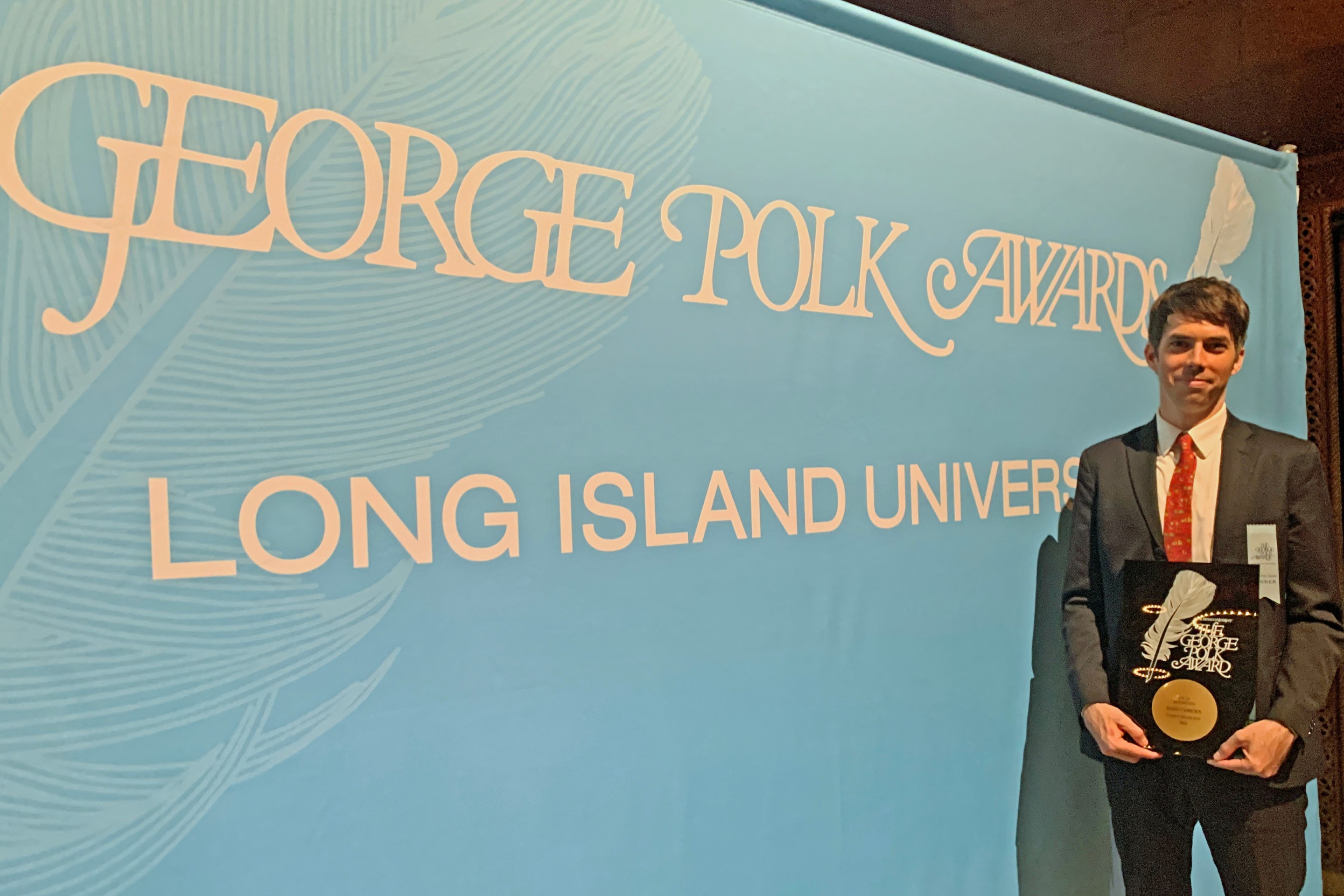T.A. Calls For Interagency Traffic Safety Task Force at City Council Hearing
2:36 PM EST on February 15, 2012
The City Council is holding a first-of-its-kind hearing on NYPD crash investigations today, a joint effort of the transportation and public safety committees. Based on the early reports via Twitter, it sounds like council members are holding NYPD's feet to the fire for failing to investigate serious crashes and letting motorists off the hook for the harm they cause.
Streetsblog's Brad Aaron will be filing a full report on the hearing later on. In the meantime, here are two pieces of testimony Streetsblog received in advance of the hearing, from Transportation Alternatives Executive Director Paul Steely White and from Steve Vaccaro, the attorney for the family of slain cyclist Mathieu Lefevre. The two statements give a sense of what street safety advocates are hoping to see come out of the hearing.
From White:
Good morning, Chair Vacca, Chair Vallone and Members of the City Council Transportation and Public Safety Committees. Thank you for convening this very important hearing.
The New York City Police Department is among the most sophisticated law enforcement operations in the country. It’s the sixth largest standing army in the world, it has officers stationed in scores of foreign nations and it can shoot down small aircraft. The question for us today is if its officers can do more to keep New Yorkers safe on our own streets and deter drivers from killing hundreds and injuring thousands of innocent people every year?
Today’s hearing is certainly timely. In a short amount of time, the Council has exposed profound and systemic flaws in the New York City Police Department’s efforts to prevent crashes and in their crash investigation practices. Even though these deficiencies are rooted in the Police Department’s policies, simple amendments to Departmental policy won’t resolve them. We need a deliberate, thorough response; we need a Task Force charged with making recommendations and the power to implement them.
Everyone in this city has the right to travel safely. No one should go out their front door and expect anything less than to arrive at their destination alive. For this reason, crash prevention must be a top priority of the Police Department. Through rigorous investigations and data-driven enforcement, all crashes are preventable.
Dangerous driving is a public health and public safety crisis in New York City and the NYPD has the power to stop it. Between 2001 and 2010, 1,745 pedestrians and bicyclists have been killed in New York City traffic and 142,485 have been injured. As long as the default response to a motor vehicle crash is ?accidents happen,? the behaviors that are killing and injuring people will continue. Every year, New York State’s Department of Motor Vehicles compiles a list of crashes which occurred during the previous year, and also reports the causes of those crashes. We have analyzed that report, and found that over 60% of crashes which injure or kill pedestrians and bicyclists in New York City were caused by drivers who are violating the law – either they were speeding, driving while distracted, failing to yield, and so on. It is not an ?accident? when a pedestrian is struck by a speeding motorist; these crashes are preventable.
This is why we are calling for a Task Force to propose new rules that the Police Department can implement to bring justice to crash victims and their families and reap cost savings for the City of New York. The Task Force should be composed ofrepresentatives from the Police Department, the District Attorneys’ Offices, the Corporation Counsel, representatives from the Council, and representatives of crash victims and crash victim advocates.
This Task Force’s mission should be to assess the current state affairs of the Bloomberg Administration’s traffic safety enforcement and crash investigation efforts—the agencies involved, their budgets, funding sources, mandates, successes and setbacks—and identify the most effective ways to save lives and drive the number of people killed and seriously injured in traffic down to zero. The Task Force must cut through the excuses and figure out how New Yorkers will get the enforcement and investigations to make our roads safe.
As you hear Erika Lefevre, the mother of Mathieu Lefevre speak, please listen and ask yourself: Is it acceptable that the NYPD’s Accident Investigation Squad (AIS) lost evidence because they took photos with broken cameras?
As you hear from the family of Rasha Shamoon, who lost their daughter in a crash three years ago and received an investigation much like the one Mathieu Lefevre’s family received, please ask yourself: Did the quality of the Police investigation necessitate the Shamoon’s resort to civil litigation in order to attain some justice for their daughter’s death?
As you hear Michelle Matson speak, please listen and ask yourself: Is it good practice for the NYPD to merely fill in a one-page "fender bender" MV104 form for someone who suffered a broken neck and was nearly killed by a hit and run driver?
As you hear Heather Vanderberghe speak, a woman who translated her grief into a campaign to change the law and penalize negligent drivers, please listen and ask yourself: How is it, even after the law was changed, that a driver who causes a similar crash, severely injuring a young child, and witnessed by a dozen people, will not be penalized because of the Police Department’s policy on unwitnessed violations? There is an excellent bill in the State Legislature carried by Senator Squadron and Assemblyman Kavanagh to amend the careless driver statute to explicitly authorize an officer to issue a violation in these cases – but is that legislative change necessary, or do the police already have the authority?
Please also ask yourself, shouldn’t every crash that injures a child be worthy of a more serious investigation? Children are more vulnerable to the dangers posed by dangerous drivers; they often do not have the communications skills or maturity to give their version of what happened after a crash, yet the police investigate these crashes the same way as adults. How does that make sense?
As you hear Nicole Bergman’s testify, a woman who lost a loved one to a crash that was initially investigated by AIS, until they learned he might live – only for them to restart the investigation two weeks after he ultimately did die - please ask yourself, shouldn’t AIS conduct a thorough investigation in the case of a life-threatening injury, as opposed to trying to predict if the victim is going to die or not?
As you hear all this testimony, it’ll be explicitly clear – perhaps one case is a tragedy, two cases are a coincidence, three cases are a trend. But this is standard operating procedure at the New York City Police Department, and this standard operating procedure must change.
These are not easy questions to answer, which is why this City Council must empanel a team of experts to review the Police Department’s policies and resolve these longstanding issues once and for all. Accomplishing this will result in stronger investigations, more useful data, better analysis and more efficient deployment of resources to prevent crashes, injuries and deaths on our roads.
And, it will bring justice to the families and friends of Mathieu Lefevre, Rasha Shamoon, Michelle Matson, Elle Vanderberghe, Stefanos Tsigrimanis and the thousands of others that are killed and severely injured by drivers in New York City every year.
Thank you.
From Vaccaro:
Good morning. I'm a lawyer who represents cyclists and pedestrians injured in crashes. I've served for two years as the Chair of Transportation Alternatives' East Side Volunteer Committee, and I've been bicycling in New York City since high school.
My client Erika Lefevre has explained some of the problems with NYPD's investigation of her son Mathieu's death. I'd like to focus on three practical ways to improve NYPD's response to traffic crashes: First, require the Accident Investigation Squad, or AIS, to investigate a broader range of cases. Second, improve AIS transparency and accountability. Third, give police officers authority to issue summonses in clear cases of dangerous driving even when the officer doesn't witness the violation.
1. At present, AIS is deployed only in cases of actual or likely fatality - even though no other NYPD unit is specially trained to investigate crashes and determine whether traffic laws were broken. That's according to the NYPD Patrol Guide. section 217-02 sub 3.
The Tsigrimanis case, which you've received a written statement about from Nicole Bergman, shows the problem with this approach. In that case, AIS initially responded, but then closed the investigation when a doctor advised that the victim would live. Tragically, the victim died three days later, but AIS didn't return to the scene to look for witnesses and videotape evidence until 5 weeks later. Not surprisingly, they found nothing. So AIS adopted the driver's story of what happened in the crash, and blamed the victim.
Vehicle and Traffic Law Section 603A requires that a full-scale AIS-style investigation be made in all cases of fatality or serious physical harm. The NYPD patrol guide ignores this statutory mandate. As a result, many families have been denied a proper investigation. Chairmen, please make sure AIS gets the direction and the resources it needs to fulfill this statutory mandate.
2. AIS needs more transparency and accountability. It is clear to me that AIS carries out its work with an unhealthy secrecy, and is oversensitive to public scrutiny. As the lawyer for the Lefevres, I received repeated inappropriate requests from AIS officers to stop my clients from publicly criticizing the NYPD. When NYPD finally granted our FOIL request, we learned AIS had been compiling a dossier of sorts on us. Some of the material AIS had collected concerned my own activities on behalf of other clients back in August, which had absolutely nothing to do with the death of Mathieu in October. Why did traffic crash investigators gather this material?
As Louis Brandeis famously said, "sunlight is the best disinfectant." You can help bring sunlight to the AIS in two ways. First, have the AIS conduct periodic meetings with the public, just the way that local precincts conduct monthly community council meetings. AIS units should be open to public scrutiny and comment, just like precinct commanders.
Second, NYPD should not categorically refuse to share investigative materials until after the crash investigation is closed. As long as a disclosure does not interfere with an investigation, the disclosure ofevidence should be made, with appropriate redactions to protect victims' privacy. NYPD's practice of withholding crash materials is legally unsupportable and has caused the Lefevre family, the Dershowitz family and many other families of crash victims much unnecessary grief.
3. My final point is that police officers should be allowed to issue summonses for dangerous traffic violations even if they don't witness them, if there is clear evidence. At present, a non-AIS police officer can't issue a summons for a violation he or she didn't see. So Diego and Haley's Law and Elle's Law, which have already been mentioned, aren't being enforced except in fatality cases, because only AIS can enforce them.
One of my clients was hit while cycling in a bike lane by a livery driver making an illegal U-turn. Luckily her injuries were not life-threatening. She took this picture of the car exactly where it stopped after the crash. The front end is in the bike lane and the rear end is on the painted median. You don't need forensic training to know this driver broke the law.
The police came to the scene. They saw where the car was and they took the driver's statement. The driver admitted to making the illegal U-turn. But because the police didn't witness it, driver wasn't even ticketed. Isn't an admission of wrongdoing enough to issue a summons?
NYPD can do much more to make our streets safer, with the resources it has, if officers are permitted to ticket for dangerous conduct based on clear evidence like this. NYPD focuses too much on the numbers of summons, and the amount of revenue generated, and not enough on the efficacy ofthe summonses in making streets safer. If the policy is to promote safety, better to issue one ticket for a truly dangerous violation, than issue ten "gotcha" tickets for technical violations.
Stay in touch
Sign up for our free newsletter
More from Streetsblog New York City
Car Crashes by City Workers Cost Taxpayers $180M in Payouts Last Year: Report
A record number of victims of crashes involving city employees in city-owned cars filed claims in fiscal year 2023 — and settlements with victims have jumped 23 percent, a new report shows.
Tuesday’s Headlines: Biking with a Dutchman Edition
You really get a fresh perspective on city cycling when you do it with someone from Holland. Plus other news.
City Urges Judge to Toss Anti-Open Streets Lawsuit
The city's not responsible for 24-7 car access to every street, officials argued.
Opinion: Connect the Dots of Manhattan’s Missing Bike Lanes
Only a few miles of missing protected lanes stand in the way of a robust bike network.
Monday’s Headlines: Thanking the Academy Edition
We would be remiss if we didn't offer some photos and copy about Friday's George Polk Awards ceremony, plus other news.
